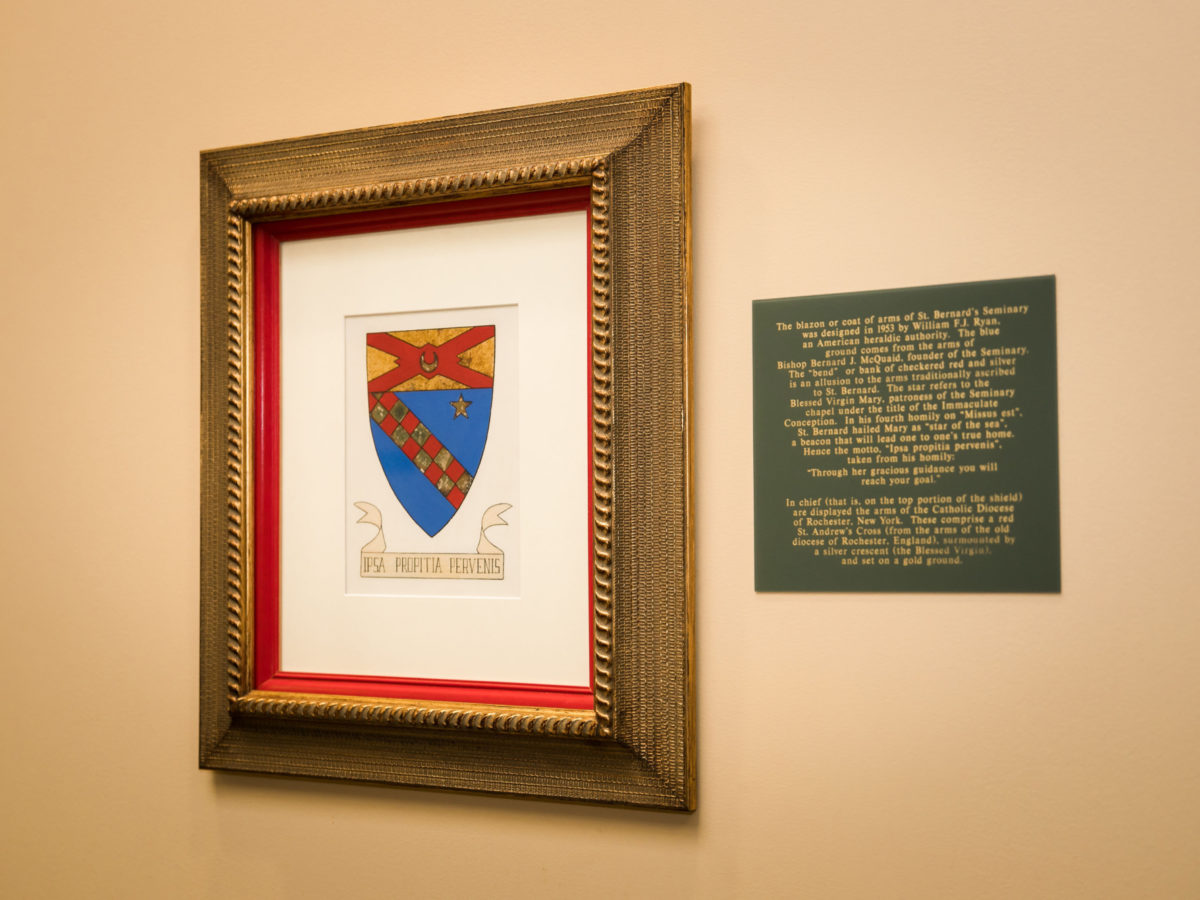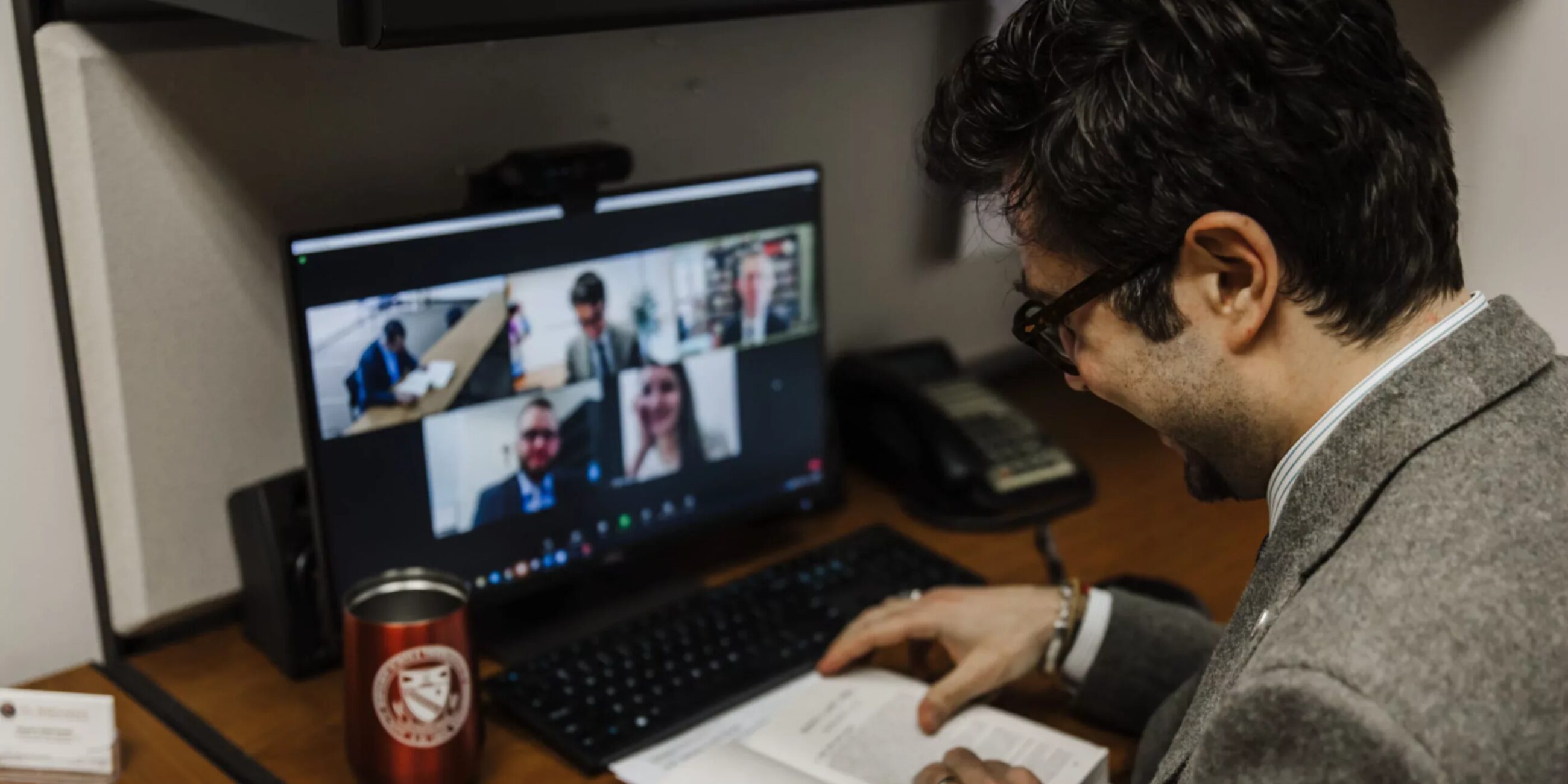St. Bernard’s School of Theology and Ministry marks the third iteration of an educational graduate institution that has served the theological and ministerial needs of the Catholic community in upstate New York and beyond since 1893. It began its service as a Roman Catholic Seminary (St. Bernard’s Seminary) established by Bishop Bernard J. McQuaid, the founding bishop of the Diocese of Rochester. Bishop McQuaid was known for his deep and abiding dedication to Catholic education. He was Seton Hall’s first president upon its opening in 1856, a position he held for 10 years (1856-57, 1859-68). Upon his installation as Bishop of Rochester in 1868, he worked to establish not only a parochial school system within the Diocese of Rochester, but also a priestly formation program whereby American-born men might be educated to become priests. To this end, he established a minor seminary in 1870, and in 1879 began his efforts to establish a major seminary that would become St. Bernard’s Seminary. By the time of his death in 1909, St. Bernard’s had grown to an enrollment of 233 seminarians, a number and a presence second only at that time to St. Mary’s Seminary in Baltimore, Maryland.

Succeeding bishops of Rochester contributed to the development of St. Bernard’s service to the Church: Archbishop Thomas F. Hickey, Bishop McQuaid’s successor, laid the groundwork for its financial stability; Bishop James E. Kearney left a legacy of deeply rooted personal devotion; and Venerable Archbishop Fulton J. Sheen introduced changes enabling St. Bernard’s to meet the challenges of the Second Vatican Council, becoming among other things one of the first Roman Catholic seminaries in the United States to open its doors to the laity, thus introducing St. Bernard’s service to what was to become one of its central constituencies. The Seminary’s program for priestly formation well served the Diocese of Rochester and others across the nation during its almost century-long existence. However, with the decline in vocations in the second half of the twentieth century and the subsequent decline in enrollment that this occasioned, the decision was made in 1981 to terminate St. Bernard’s program for priestly formation and to move its remaining educational programs to a new location at the Colgate Rochester Crozer Divinity School in Rochester, with which it signed a covenant establishing a graduate-level affiliation while retaining their own Board of Trustees, staff, and curricula.


This move marked the end of St. Bernard’s Seminary and the beginning of its second iteration as St. Bernard’s Institute. During its almost 20-year existence, the Institute focused its efforts upon the training of those pursuing their call to the permanent diaconate, as well as those among the laity who sought to contribute to the Church through ecclesial roles increasingly opened to them consequent to the Second Vatican Council. In the Fall of 1989, the Institute extended its services to the Diocese of Albany, teaching classes there which serve that Diocese’s ministerial, diaconal, and lay educational needs.
In August 2003, St. Bernard’s Institute moved to a new campus at 120 French Road in Rochester, New York, marking its third and current iteration as St. Bernard’s School of Theology and Ministry. This existence, independent from its former association with Colgate Rochester Crozer Divinity School, was made possible by the support of and financial commitment from the Diocese of Rochester under the leadership of the eighth Bishop of Rochester, The Most Reverend Matthew H. Clark, and the School’s many alumni and donors.

Through the support that the School has received from The Most Reverend Salvatore R. Matano, ninth Bishop of Rochester, the Board of Trustees, and other constituencies, St. Bernard’s began to broaden its service significantly over the past seven years (2018-2025). This third iteration of St. Bernard’s currently serves the Dioceses of Rochester, Albany, and Syracuse in New York, and Allentown, Pennsylvania, continuing its tradition of training those called to the permanent diaconate and the laity who pursue ecclesial roles available to them within their dioceses, parishes, and associated agencies. This broadened service also characterized the School’s transition in 2019 from an educational institution importantly centered upon its traditional local/regional markets to one that serves the entire country, something made possible through its distance education program. To date, our programs have reached across forty-eight states and nineteen countries. St. Bernard’s graduates now include diocesan and parish leaders, Catholic school teachers, and missionaries across the United States. Our School is accredited to award Master's degrees to students anywhere in the world through the Association of Theological Schools (ATS), and is fully registered with and recognized by the New York State Department of Education (NYSED) and the National Council for State Authorization Reciprocity Agreements (NC-SARA – “a nonprofit organization that helps expand students’ access to educational opportunities and ensure more efficient, consistent, and effective regulation of distance education programs”).

One, however, should not conclude that the School’s commitment to its local/regional service has decreased. In fact, through its service now to the national community, the benefits of this service have redounded upon its local/regional communities, bringing a greater quality and depth to its service than ever before, evidenced by its assistance of the Diocese of Buffalo during the closure of Christ the King Seminary in 2020 (providing a teach-out agreement for the students who were still studying at the seminary upon its closure), the half-day retreats offered each month, and “St. Bernard’s On the Road,” an initiative that makes faculty available for in-person talks to parish communities throughout upstate New York.
St. Bernard’s has enjoyed many recent collaborations with other communities that serve the Church locally/regionally/nationally, all of which benefit the entirety of the Catholic communities we serve. In particular, the School enjoys collaborations with the Finger Lakes Medical Guild and the National Catholic Bioethics Center (with whom we have collaborated to offer our Graduate Certificate in Catholic Bioethics), the St. John Society (with whom we offer our Certificate in Evangelization), the Abbey of the Genesee (with whom we offer retreat courses during the summer semester), and those who work on behalf of the Catechesis of the Good Shepherd in the Diocese of Rochester.
As of Spring 2025, the School’s enrollment is approximately 150 students across all credit-bearing academic programs. As stated, our campus is in Rochester, NY, from which we offer courses in-person, while all degree and certificate programs are available synchronously through our distance educational technology. The School has four full-time faculty (with two receiving a course release for administrative duties), two program directors, six staff members, and twenty-three adjunct professors. The School’s governing body, the Board of Trustees, is comprised of thirteen people. We are a non-stock not-for-profit 501(c)(3), and enjoy a close relationship with the Roman Catholic Diocese of Rochester, sharing a common mission and vision, resources, and several ex officio memberships on the Board of Trustees from the presbyterate; most importantly, the Diocese’s Bishop acts as the School’s Chancellor.


